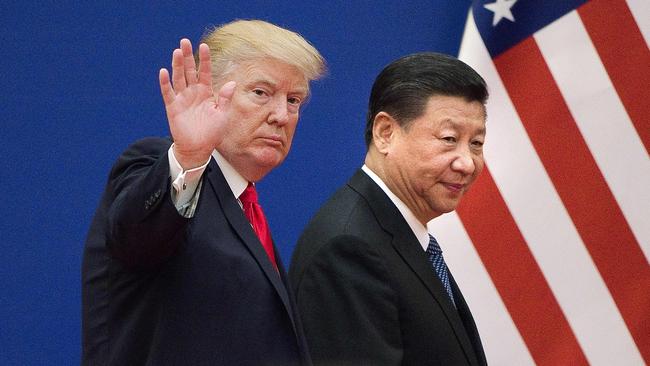
Donald Trump’s trade outrage, embodied in his new tariffs on China, is an irresistible force that is about to meet the immovable object of Beijing’s mercantilist and dirigiste and seemingly unalterable economic structure.
Trump’s new tariffs on $US200 billion ($278bn) worth of Chinese exports to the US are the shape of things to come. Indeed Trump has promised a lot more.
This US-China trade conflict has been brewing for a long time and it is not going away, even if Trump is a one-term president.
For if Trump is beaten in two years by a left-wing populist Democrat, the successful challenger is not going to surf into the White House on the basis of a campaign, waged across the battleground states of the mid-west, for free trade with China.
Two reasons this dispute is likely to get worse, and transcend the Trump presidency, are that Trump’s complaints about Beijing are essentially correct, and in order to answer them properly Beijing would need to change its economic system fundamentally.
Everyone criticises Trump for being a protectionist. But at the end of the day, the US is still vastly, almost unmeasurably, a more open economy than is China.
Beijing has mastered the art of manipulating the international trade system, violating the intent of its rules without violating the letter of its rules.
The US ran a $US375bn trade deficit with China last year.
That is politically unsustainable. But with other countries, the US could just do a deal — like it did with Japan in the 1980s and 90s — in which the other country, at government direction, buys more American stuff.
Something like that may still happen with Trump and China, for Trump is always in the market for a short-term deal. But the sources of deep US complaint about Beijing on trade are not amenable to a short-term deal.
Here are five specific US complaints against Beijing.
One: Beijing steals US intellectual property through cyber and other espionage means.
Two: Beijing often makes it a condition of US investment in China, and access to the vast Chinese market, that the US company involved fully transfers the intellectual property involved in the product. Once the IP transfer is complete, the American firm is often shown the door, to find it now faces internationally a lower-cost Chinese competitor that possesses all its industrial secrets.
Three: Beijing erects innumerable and unbeatable non-tariff barriers to prevent foreign competition in any Chinese market it wants to protect. These are almost impossible to police and even if they are dismantled they can be reimposed at a moment’s notice.
Four: Beijing often sells products at a loss to sustain domestic factories and secure foreign market share. This is the textbook definition of dumping.
Five: every Chinese company has at its core a committee of the Chinese Communist Party and is required to serve Beijing’s strategic interests.
All of these features are integral to the Chinese system as it has evolved. They might be moderated in various ways; none of them is going to change fundamentally.
For a long time, pure free traders in the US system thought they benefited anyway because they got cheap Chinese goods and lots of Chinese investment. More recently, it is clear there are huge strategic costs in allowing Beijing to dominate areas such as telecommunications. But there are also economic costs.
Trump is imposing tariffs against the wishes of some of his economic advisers, and with the support of some others, but generally with the support of his strategic community. And they appeal to Joe Six-Pack in battleground states.
The global economy, and the Australian economy, may suffer fallout, but this trade dispute has a long, long way to run.




To join the conversation, please log in. Don't have an account? Register
Join the conversation, you are commenting as Logout